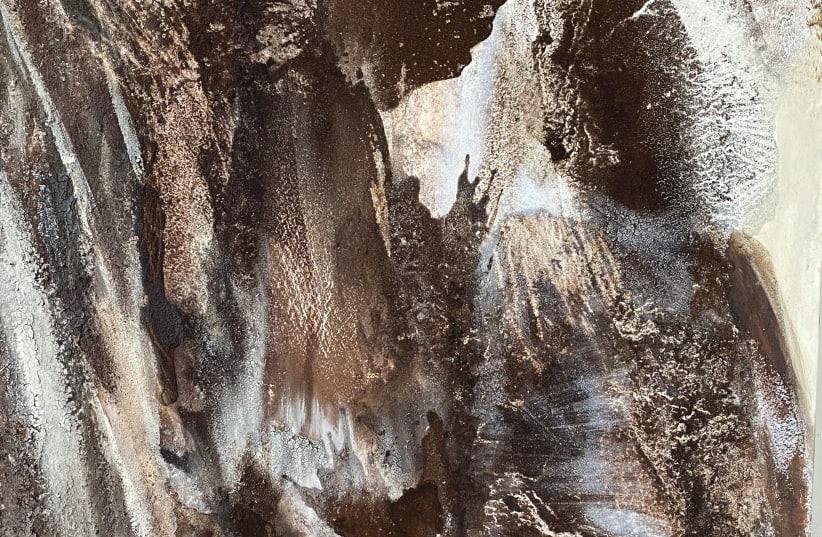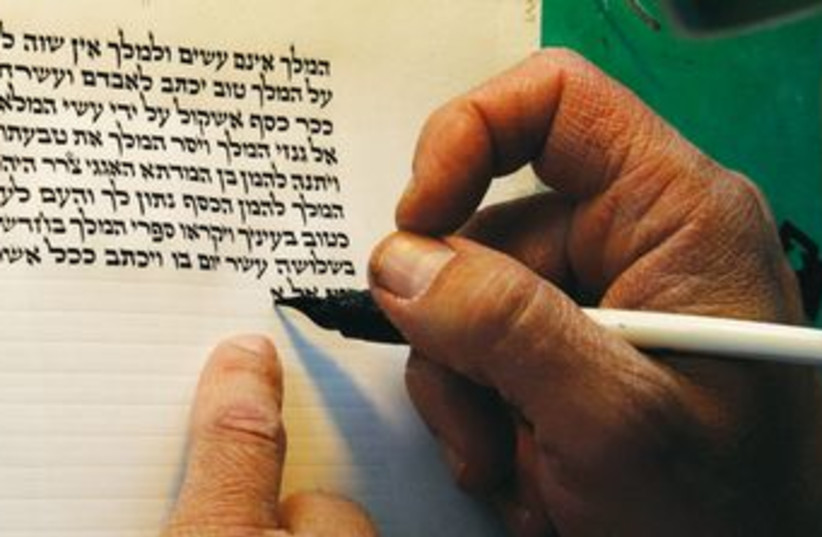And an angel of God called to him from heaven and said, “Abraham! Abraham!” And he said, “Here I am.” And the angel said, “Do not stretch forth your hand to the lad, nor do the slightest thing to him, for now I know that you are a God-fearing man, and you did not withhold your son, your only one, from Me” (Gen. 22:11-12).
Who was this angel, and what are angels?
Parashat Vayera is brimming with angels – angels of good tidings, angels of destruction, angels of healing. At the beginning of the parsha, Abraham sees three angels in the form of men standing in front of him. Later, two of the angels go to Sodom to rescue Lot and destroy the wicked city. When Hagar is sent away into the desert, an “angel of God” calls to her to reassure her and show her the well. And finally, this angel comes to Abraham just in time to prevent him from carrying out the sacrifice of Isaac.
The role and importance of angels in Judaism
The Hebrew word for “angel” – malach – basically means “messenger.” In the Torah, an angel is a spiritual being sent by God to fulfill a specific mission. Indeed, it is said that each angel is given only one task. In the first episode in our parsha, the Talmud asks, “Who were the three men?” and answers, “The angels Michael, Gabriel, and Raphael. Michael (‘who is like God?’) came to bring the tidings to Sarah of Isaac’s birth; Raphael (‘healing of God’) to heal Abraham; and Gabriel (‘might of God’) to overturn Sodom. But is it not written, ‘The two angels came to Sodom at evening’? Michael accompanied Gabriel to rescue Lot” (Talmud, Bava Metzia 86b).
Our tradition contains various perspectives on the role and importance of the angels. Rabbenu Bechaye, commenting on the cherubim in the Tabernacle, says that while the first positive commandment is to believe in the existence of God, the second is to believe in the existence of angels. Perhaps we can understand this in the sense that the angels are agents of a God who is not detached from the world but intervenes in its workings.
Sometimes the angels are depicted as disputing with God. There is a midrash (rabbinic literature) about how the tears of the angels disabled Abraham’s knife from killing Isaac. “When Abraham sent his hand and took the knife to slaughter his son, the ministering angels cried, and their tears fell on the knife, and the knife stood and lost its power over Isaac’s neck… Then an angel of God called to him from heaven…” (Otzar Midrashim, Midrash Ve’Yosha).
Another interpretation minimizes the role of the angel. According to the Midrash Vayikra Rabba, the angel called to Abraham, but after Abraham answered “Here am I,” the divine word spoke. Rabbi Yaakov Tzvi Mecklenburg explains that the angel called out – not to deliver a prophecy but simply to get Abraham’s attention. The actual command “Do not stretch out your hand against the boy” was not spoken by an angel at all, but by God Himself. Several commentators note that calling Abraham’s name twice “Abraham, Abraham” was necessary to gain his attention because, as Rabbi Samson Raphael Hirsch expresses it, “he was completely absorbed in carrying out the dread command of his God.” Once Abraham’s attention had been gained, God proceeded to speak. Again, it was God and not an angel who rescinded the original command to sacrifice Isaac.
YORAM RAANAN’S painting Abraham, Abraham conveys the mysterious, unfathomable nature of the story. Depicted in deep, rich earth color, the two figures are seen in facing profiles. Like the angels who appeared to Abraham at the beginning of the parsha, the figure on the left appears human, though wings are indicated with a few strokes. The shared line, dividing the profiles of the white face of Abraham from the dark face of the angel, delineates each character in the momentous encounter.
Abraham, Abraham is one of a series using a novel medium.
Raanan does not like to waste anything, so one day he decided to make use of coffee grounds as a pigment. This gave rise to a series of 40 paintings called “Grounds Awaken.” The coffee grounds were mixed with acrylic binder, and then poured onto the canvas. As the dark, rich grounds are caked on, they give a palpable, physical presence; and yet the paintings are also subtle and sparse and atmospheric, both liquid and ethereal. As the paint spills and coagulates, images often reveal themselves in the grounds, giving rise to surprises, such as this arresting image of Abraham face to face with the angel.
Raanan often creates in two phases. First, there is an inspirational dynamic expression, guided by “the passion of the moment and the magic of the muse,” where “images flow through paint and reveal themselves on the canvas.” Then, says Raanan, “a lot of revision goes into the paintings. Passages are often reworked extensively so that the resulting hand-working takes on a life of its own. The sheer physical beauty of paint becomes as central to the work as the chosen subject.”
As Raanan began to craft and refine the image, Abraham’s face and aura lighten, and the dark, angelic man-like form seems to be entreating him to look up.
“AND ABRAHAM lifted up his eyes, and he saw, and lo! behind him was a ram, caught in a thicket by its horns. And Abraham went and took the ram and offered it up as a burnt offering instead of his son. And Abraham named that place ‘The Lord will see,’ as it is said to this day: On the mountain, the Lord will be seen” (Gen. 22:13-14).
The Midrash comments (Bereishit Rabba 56:10): “He said to him, Sovereign of the Universe! When you ordered me to take my only son.. I suppressed my feelings of compassion in order to do Your will. Even so may it be Your will, O Lord our God, that when Isaac’s children are in trouble, that you will remember that binding in their favor and be filled with compassion for them.”
We feel the wood, the thorns in the painting… May we yet look up and see the ram sent to release Isaac from the binding. ■
Meira Raanan is the author of Art of Revelation: A Visual Encounter with the Jewish Bible, a commentary on the paintings by her husband, Yoram Raanan. She also teaches Jewish meditation. Esther Cameron is a poet, scholar, and essayist living in Jerusalem. She is editor-in-chief of The Deronda Review.

